- News >
- Top 10 Most Visited World Heritage Sites
Top 10 Most Visited World Heritage Sites
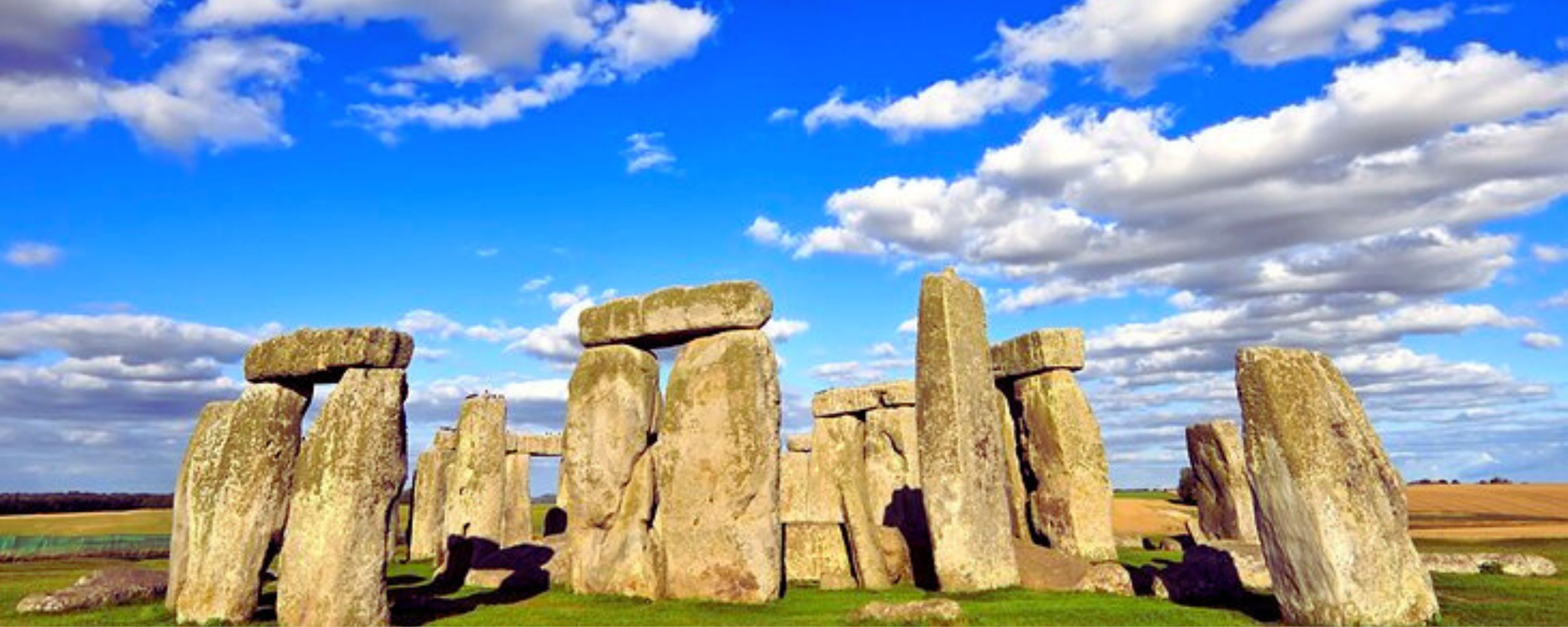
The UNESCO World Heritage Sites attract millions of visitors each year, offering a glimpse into the world's most remarkable cultural and natural treasures. These sites have been inscribed on the UNESCO World Heritage List due to their outstanding universal value and the need for their preservation.
From ancient wonders to modern marvels, these sites serve as testaments to human ingenuity and the beauty of our planet. Let's embark on a journey to unravel the cultural and natural wonders of the top 10 most visited UNESCO World Heritage Sites.
|
RANK |
SITE |
LOCATION |
NO. VISITORS |
|
1. |
The Great Wall of China |
China |
100 million |
|
2. |
Petra |
Jordan |
6 million |
|
3. |
Machu Picchu |
Peru |
1.5 million |
|
4. |
Taj Mahal |
India |
8 million |
|
5. |
Chichen Itza |
Mexico |
3 million |
|
6. |
Rome |
Italy |
9 million |
|
7. |
Colosseum |
Italy |
7 million |
|
8. |
The Lean tower Pisa |
Italy |
3 million |
|
9. |
The Great Barrier Reef |
Australia |
2 million |
|
10. |
Yellowstone National Park |
United States |
4 million |
-
The Great Wall of China
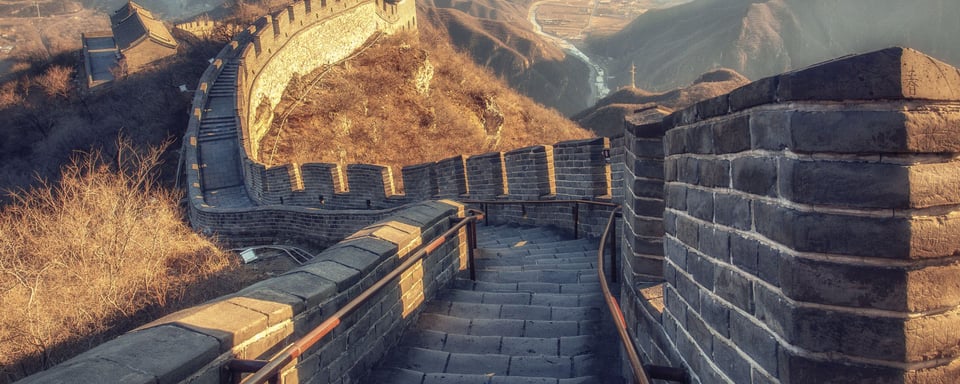
The Great Wall of China is a series of fortifications that were built over centuries to protect China from invaders. It is one of the most recognizable landmarks in the world, and is a UNESCO World Heritage Site. The Great Wall is a cultural treasure, and efforts are being made to preserve it from the effects of erosion and pollution.Its cultural value stems from its role as a symbol of China's ancient civilization and its significant contribution to world history.
Here are some key aspects of its cultural and natural value, as well as the preservation efforts in place:
-
Cultural Value
Historical Significance
The Great Wall of China was built over several centuries, starting from the 7th century BC and continuing until the Ming Dynasty in the 17th century AD. It served as a massive defensive structure to protect China's northern borders from invasions, highlighting the military strategies and capabilities of ancient China.
Architectural Wonder
The Great Wall showcases remarkable engineering and construction techniques, with sections made of stone, brick, wood, and other materials. It features watchtowers, beacon towers, fortresses, and gates that reflect the architectural prowess of ancient China.
Cultural Symbolism
The Great Wall of China is deeply ingrained in Chinese culture and has become a powerful symbol of national pride, resilience, and unity. It is a testament to the ingenuity and labour of countless generations who dedicated themselves to its construction and defence.
-
Natural Value
Scenic Landscapes
The Great Wall traverses diverse landscapes, including mountains, deserts, and grasslands. It offers breathtaking views of the surrounding natural beauty, providing visitors with a unique experience that combines history and stunning scenery.
-
Preservation Efforts
Conservation and Restoration
The Chinese government has undertaken extensive efforts to preserve and restore different sections of the Great Wall. Conservation projects involve stabilising structures, repairing damaged sections, and protecting against natural erosion and human encroachment.
Maintenance and Monitoring
Regular maintenance activities, such as cleaning, repairing, and monitoring the condition of the wall, are carried out to ensure its structural integrity and safety for visitors.
UNESCO Protection
The Great Wall of China has been inscribed as a UNESCO World Heritage Site since 1987. This designation highlights its outstanding universal value and the need for international cooperation in its preservation and management.
Visitor Management
To balance tourism with preservation, visitor numbers are carefully managed in certain sections of the wall. This helps minimise impacts on the structure and surrounding environment, ensuring a sustainable approach to tourism.
The preservation efforts for the Great Wall of China aim to protect its cultural and historical significance, while also maintaining its natural landscapes. These endeavours are essential to safeguarding this iconic World Heritage Site for future generations to appreciate and understand the remarkable achievements of ancient China.
-
Petra
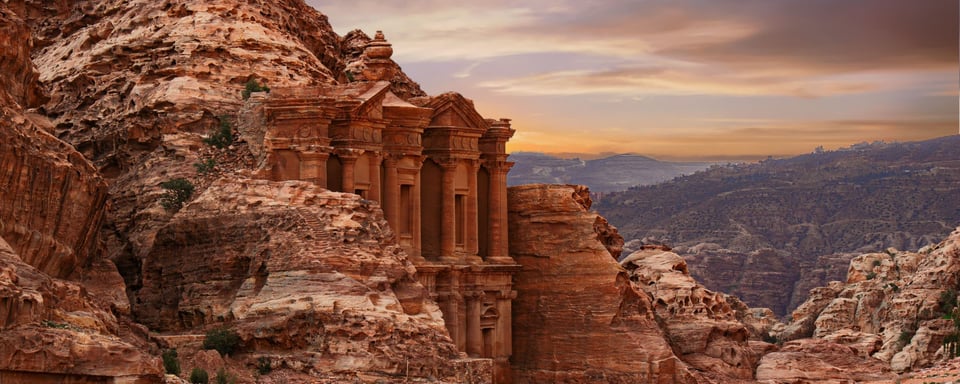
Petra is an ancient city in Jordan that was carved into the sandstone cliffs. It is a UNESCO World Heritage Site, and is one of the most popular tourist destinations in the Middle East. Petra is a cultural treasure, and efforts are being made to preserve it from the effects of tourism.This ancient city holds historical significance and boasts stunning architecture carved into the surrounding rock formations.
Let's explore its cultural and natural value, as well as the preservation efforts in place:
-
Cultural Value
Historical Significance
Petra was the capital of the Nabataean Kingdom, a thriving civilization that flourished from the 4th century BC to the 2nd century AD. It served as a crucial trading hub along ancient trade routes, connecting the Arabian Peninsula, Egypt, and Syria. The city's historical importance lies in its strategic location and its role as a melting pot of diverse cultures and architectural styles.
Architectural Marvel
The architectural features of Petra are awe-inspiring. The most famous structure, Al-Khazneh (The Treasury), is a monumental tomb carved into the rose-coloured sandstone cliffs. The city also includes numerous tombs, temples, theatres, and intricate rock-cut facades that showcase the artistic and engineering skills of the Nabataeans.
Cultural Exchange
Petra's location at the crossroads of major ancient civilizations facilitated cultural exchange and trade. The city reflects influences from Nabataean, Greek, Roman, and Egyptian cultures, making it a unique blend of architectural styles and artistic traditions.
-
Natural Value
Unique Geological Setting
The city of Petra is nestled within a breathtaking natural landscape characterised by rugged mountains, canyons, and sandstone cliffs. The contrasting colours and dramatic rock formations provide a stunning backdrop for the ancient structures, making it a visually captivating site.
-
Preservation Efforts
Conservation and Restoration
The preservation of Petra involves ongoing conservation and restoration efforts to protect its fragile structures and prevent further deterioration. This includes stabilisation of unstable rock-cut facades, reinforcement of structures, and repair of weathering and erosion damage.
Visitor Management
To balance tourism and preservation, the number of visitors to Petra is carefully controlled. Visitor routes and access are regulated to minimise impacts on the archaeological sites and surrounding environment. Local guides and rangers play a crucial role in ensuring responsible tourism practices.
UNESCO Protection
Petra has been a UNESCO World Heritage Site since 1985, emphasising its outstanding universal value and the need for international cooperation in its preservation. The designation encourages collaboration between local authorities, international organisations, and communities to safeguard its cultural and natural heritage.
Education and Awareness
Efforts are made to educate visitors and local communities about the significance of Petra and the importance of sustainable tourism. This includes promoting responsible behaviour, raising awareness about preservation challenges, and fostering a sense of ownership and pride among the local population.
Preserving Petra is crucial to safeguard its cultural legacy and the remarkable architecture it showcases. The conservation and management efforts in place ensure that future generations can appreciate and learn from this unique World Heritage Site while maintaining its natural integrity.
-
Machu Picchu
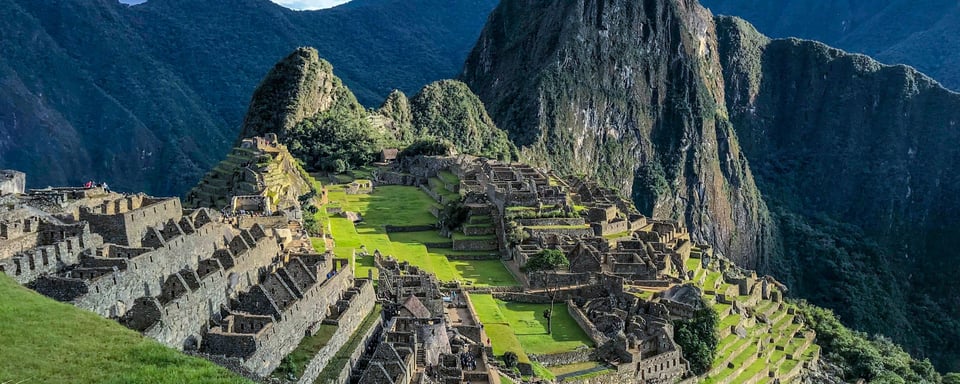
Machu Picchu is an ancient Inca city that is located in the Andes Mountains of Peru. It is a cultural treasure, and efforts are being made to preserve it from the effects of tourism.This ancient Incan city is perched high in the Andes Mountains and is renowned for its architectural marvels and breathtaking setting.
Let's explore its cultural and natural value, as well as the preservation efforts in place:
-
Cultural Value
Historical Significance
Machu Picchu was built in the 15th century and served as a significant religious, political, and administrative centre of the Inca civilization. It remained hidden from the Spanish conquistadors and was only rediscovered in 1911. The city offers insights into the advanced architectural and engineering skills of the Incas.
Architectural Splendour
Machu Picchu showcases outstanding architectural features, including intricate stone masonry, terraces, plazas, and temples. The precision of its construction and the integration of the site into the natural landscape demonstrate the Inca's deep understanding of their environment.
Spiritual and Cultural Significance
Machu Picchu is believed to have held spiritual and ceremonial importance for the Incas. Its unique location amidst the mountains and the presence of sacred structures, such as the Temple of the Sun and the Intihuatana Stone, suggest its role in astronomical observations and religious practices.
-
Natural Value
Scenic Beauty
Machu Picchu is set amidst breathtaking natural landscapes, with the towering peaks of the Andes, lush valleys, and winding rivers. The site offers visitors awe-inspiring views and an immersive experience in the natural wonders of the region.
-
Preservation Efforts
Conservation and Restoration
The preservation of Machu Picchu involves ongoing efforts to safeguard its structures and prevent further degradation. Restoration projects focus on stabilising and preserving the stone structures, managing water drainage, and mitigating the impacts of weathering and erosion.
Visitor Management
To balance tourism and preservation, visitor access to Machu Picchu is carefully regulated. Entry is limited, and strict controls are in place to manage visitor flow and minimise impacts on the fragile archaeological site.
Sustainability Measures
Sustainable practices are implemented to protect the natural environment surrounding Machu Picchu. These include waste management, energy conservation, and the promotion of responsible tourism practices among visitors.
UNESCO Protection
Machu Picchu has been a UNESCO World Heritage Site since 1983, underscoring its outstanding universal value and the need for its preservation. The designation encourages collaboration between local authorities, international organisations, and communities to ensure the sustainable protection and management of the site.
Preserving Machu Picchu is vital to safeguard its cultural legacy and the unique insights it provides into the Inca civilization. The conservation efforts in place aim to protect its archaeological integrity and natural surroundings, allowing future generations to appreciate its historical and natural significance.
-
Taj Mahal
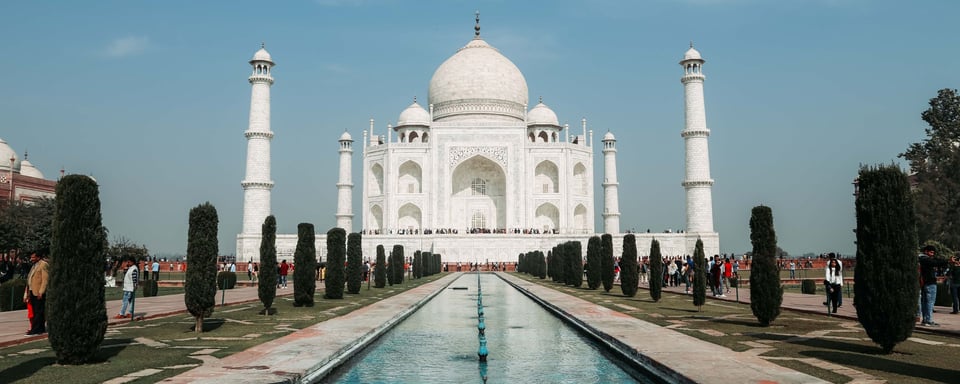
Taj Mahal, located in Agra, is a white marble mausoleum that was built by Mughal emperor Shah Jahan in memory of his wife Mumtaz Mahal. It is a cultural treasure, and efforts are being made to preserve it from the effects of pollution and climate change.It holds significant cultural and historical value and is considered one of the most beautiful structures in the world.
Let's delve into its cultural and natural value, as well as the preservation efforts dedicated to its conservation:
-
Cultural Value
Architectural Marvel
The Taj Mahal was built in the 17th century by Emperor Shah Jahan as a mausoleum for his beloved wife, Mumtaz Mahal. It showcases exceptional Mughal architecture, characterised by intricate marble inlay work, intricate carvings, domes, minarets, and symmetrical design. The symmetrical layout and meticulous detailing reflect the perfection and craftsmanship of the time.
Symbol of Love
The Taj Mahal is considered a symbol of eternal love and is recognized globally as a testament to romance. Its construction was a labour of love, and it represents the depth of emotions and devotion of Emperor Shah Jahan to his wife.
Cultural Heritage
The Taj Mahal stands as an iconic symbol of Indian culture and heritage. It is an embodiment of the rich Mughal history and serves as a powerful reminder of the artistic and architectural achievements of the era.
-
Preservation Efforts
Restoration and Maintenance
The preservation of the Taj Mahal involves ongoing restoration and maintenance efforts to protect its structural integrity and aesthetic appeal. Measures are taken to address issues like structural stability, cleaning of marble surfaces, and repair of damaged or deteriorated elements.
Pollution Control
The Taj Mahal is susceptible to air pollution and acid rain, which can cause discoloration and damage to the marble. To mitigate this, various pollution control measures have been implemented, including restrictions on industrial activities in the vicinity and efforts to reduce vehicular emissions.
Visitor Management
To balance tourism and preservation, visitor access to the Taj Mahal is carefully regulated. The number of visitors is controlled, and specific visitor routes are designated to minimise wear and tear on the monument. Additionally, restrictions on photography, touching the marble, and carrying certain items are in place to protect the site.
UNESCO Protection
The Taj Mahal has been inscribed as a UNESCO World Heritage Site since 1983. This recognition highlights its outstanding universal value and emphasises the need for international collaboration in its preservation and management.
Preserving the Taj Mahal is of paramount importance to protect its cultural legacy and ensure its longevity for future generations to appreciate. The preservation efforts encompass restoration, pollution control, visitor management, and collaboration with international organisations. By safeguarding this architectural gem, the cultural and historical significance of the Taj Mahal continues to be cherished and celebrated.
-
Chichen Itza
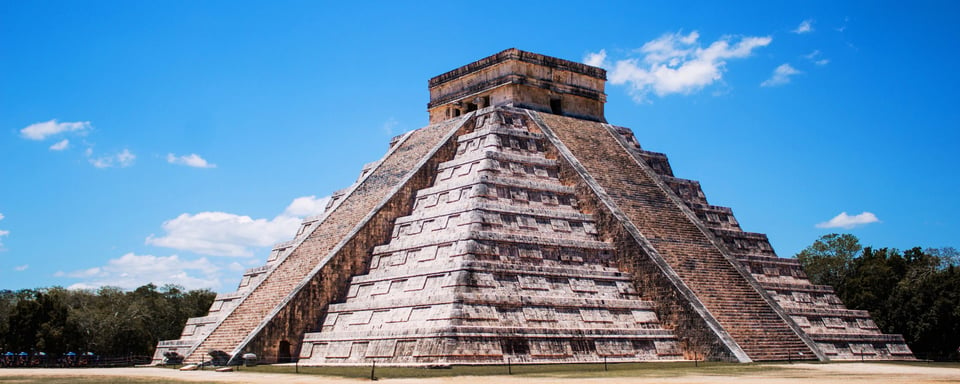
Chichen Itza is an ancient Mayan city that is located in Mexico. It is a UNESCO World Heritage Site, and is one of the most popular tourist destinations in Central America. Chichen Itza is a cultural treasure, and efforts are being made to preserve it from the effects of tourism.It holds immense cultural value as an ancient Mayan city and displays a unique blend of architectural styles.
Let's explore its cultural and natural value, as well as the preservation efforts in place:
-
Cultural Value
Mayan Heritage
Chichen Itza was a major centre of the ancient Mayan civilization, thriving between the 9th and 12th centuries AD. It served as a prominent political, economic, and religious hub, showcasing the complex social organisation and intellectual achievements of the Maya people.
Architectural Splendour
The site features iconic structures like the Temple of Kukulcan (El Castillo), a towering pyramid with remarkable astronomical alignments. Other notable structures include the Great Ball Court, the Temple of the Warriors, and the Sacred Cenote. The intricate carvings, detailed sculptures, and precise alignments demonstrate the advanced architectural and mathematical knowledge of the Mayans.
Cultural Exchange
Chichen Itza played a crucial role as a centre of cultural exchange between the Maya and other Mesoamerican civilizations, resulting in the fusion of different architectural styles and artistic influences.
-
Natural Value
Biodiversity
While Chichen Itza is primarily known for its cultural heritage, it is also situated in a region of rich biodiversity. The surrounding tropical forests provide a habitat for numerous plant and animal species, contributing to the site's ecological significance.
-
Preservation Efforts
Restoration and Conservation
Various restoration and conservation efforts have been undertaken to preserve the structures and archaeological features of Chichen Itza. This includes stabilising unstable buildings, preventing further deterioration, and protecting vulnerable areas from natural elements.
Visitor Management
To balance tourism and preservation, measures are in place to regulate visitor access and minimise the impact on the site. This includes designated visitor routes, restrictions on touching or climbing the structures, and visitor capacity control during peak periods.
UNESCO Protection
Chichen Itza was designated as a UNESCO World Heritage Site in 1988, recognizing its outstanding universal value and the importance of its preservation. This designation helps foster international collaboration and support for the site's conservation and management.
Education and Awareness
Efforts are made to raise awareness among visitors, local communities, and stakeholders about the significance of Chichen Itza. Educational programs, guided tours, and informational materials aim to promote responsible tourism and foster a sense of stewardship for the site.
Preserving Chichen Itza is vital to protect its cultural heritage and ecological surroundings. Through restoration, visitor management, and awareness initiatives, the site's unique architectural and cultural treasures are conserved, allowing visitors to appreciate the rich history and architectural achievements of the Mayan civilization.
-
Rome
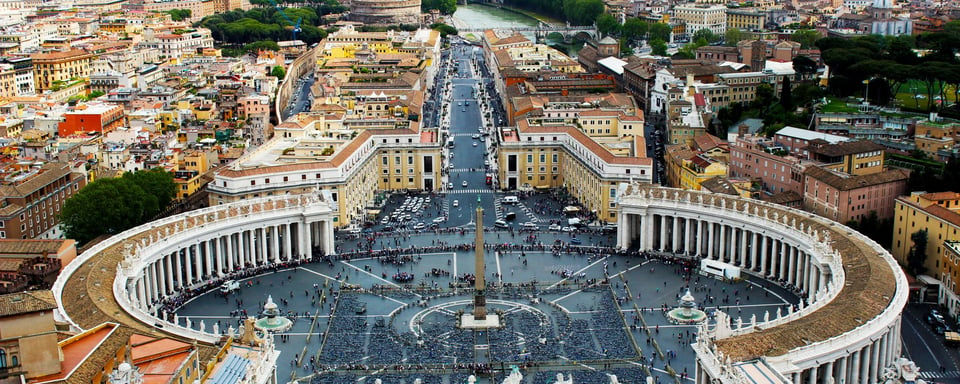
Rome is the capital of Italy and is home to a wealth of historical and cultural treasures. Rome is a cultural treasure, and efforts are being made to preserve it from the effects of tourism. It is known as the "Eternal City," Rome holds immense cultural value as one of the birthplaces of Western civilization and for its remarkable architectural and artistic heritage.
-
Cultural Value
Historical Significance
Rome boasts a rich history dating back over 2,500 years. It served as the center of the Roman Empire, influencing politics, law, architecture, and culture across Europe and beyond. Rome is home to iconic ancient structures, such as the Colosseum, the Roman Forum, and the Pantheon, which are testament to its historical importance.
Architectural Marvels
Rome showcases exceptional architectural achievements spanning different periods, from ancient Roman structures to Renaissance and Baroque masterpieces. Buildings like the Colosseum, St. Peter's Basilica, and the Trevi Fountain highlight the city's architectural diversity and artistic brilliance.
Cultural Legacy
Rome is the birthplace of Roman mythology, classical art, and renowned historical figures. It has nurtured the development of literature, philosophy, and scientific advancements, leaving an indelible impact on Western civilization.
-
Natural Value
Natural Landscapes
While Rome is primarily known for its cultural heritage, it is also surrounded by natural landscapes. The city lies within the Lazio region, which encompasses diverse natural environments, including rolling hills, vineyards, and picturesque countryside.
-
Preservation Efforts
Restoration and Conservation
Rome has undertaken extensive restoration and conservation efforts to preserve its historical structures. Projects focus on stabilising ancient monuments, preserving frescoes and mosaics, and maintaining the structural integrity of historic buildings.
UNESCO Protection
Several areas within Rome, including the Historic Centre of Rome, the Vatican City, and the Basilica of St. Paul Outside the Walls, have been inscribed as UNESCO World Heritage Sites. This recognition emphasises the need for international collaboration in the preservation and management of these culturally significant areas.
Zoning and Development Control
To protect the city's historical character, zoning regulations and development controls are implemented. These measures help maintain the visual integrity of Rome's historic sites and prevent incompatible development.
Cultural Heritage Institutions
Rome is home to numerous cultural heritage institutions, including museums, libraries, and research centres. These institutions play a vital role in preserving, studying, and showcasing the city's cultural heritage through exhibitions, educational programs, and research initiatives.
Preserving Rome's cultural heritage is crucial to ensure the longevity of its historical legacy. Through restoration projects, UNESCO protection, zoning regulations, and the work of cultural institutions, the city strives to safeguard its unique cultural and architectural treasures. By embracing a balance between preservation and sustainable development, Rome continues to captivate visitors and inspire future generations with its extraordinary cultural heritage.
-
Colosseum
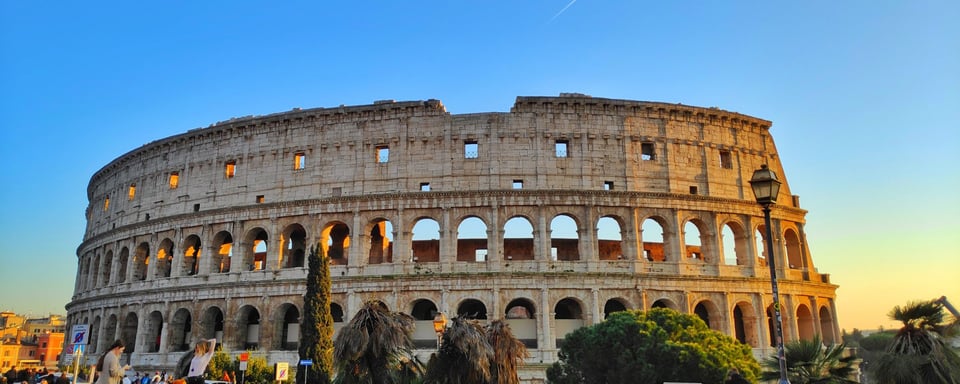
The Colosseum, also known as the Flavian Amphitheatre, is a world-famous ancient Roman monument located in Rome, Italy.The Colosseum is a cultural treasure, and efforts are being made to preserve it from the effects of erosion and pollution.
-
Cultural Value
Historical Significance
The Colosseum was constructed between 70 and 80 AD and served as a grand amphitheatre for gladiatorial contests, animal hunts, and other public spectacles during the Roman Empire. It stands as a testament to the power, engineering expertise, and social dynamics of ancient Rome.
Architectural Marvel
The Colosseum is an architectural masterpiece, showcasing innovative construction techniques of the time. Its elliptical shape, tiered seating, and elaborate system of corridors, passages, and underground chambers reflect the grandeur and sophistication of Roman engineering and design.
Symbol of Rome
The Colosseum has become an iconic symbol of Rome and a significant part of its cultural identity. It represents the grandeur and legacy of the Roman Empire, attracting millions of visitors who come to marvel at its historical and architectural splendour.
-
Natural Value
- Historical Landscape: While the Colosseum's value is primarily cultural, it is set within a historical landscape that includes the Roman Forum and other ancient structures. The surrounding archaeological sites contribute to the overall significance of the area.
-
Preservation Efforts
Restoration and Conservation
The preservation of the Colosseum involves ongoing restoration and conservation efforts to protect its structural integrity and aesthetic appeal. This includes stabilising the monument, addressing issues like weathering and erosion, and restoring damaged sections.
Visitor Management
To balance tourism and preservation, visitor access to the Colosseum is carefully regulated. Timed entry tickets, designated visitor routes, and visitor capacity control measures are implemented to minimise the impact on the monument and ensure its long-term sustainability.
Sustainable Practices
Efforts are made to adopt sustainable practices in managing the site. This includes waste management, energy conservation, and the promotion of responsible tourism practices among visitors.
UNESCO Protection
The Colosseum, along with the adjacent Roman Forum and Palatine Hill, is recognized as a UNESCO World Heritage Site. This designation highlights its outstanding universal value and emphasises the need for international collaboration in its preservation and management.
-
The Lean Tower of Pisa
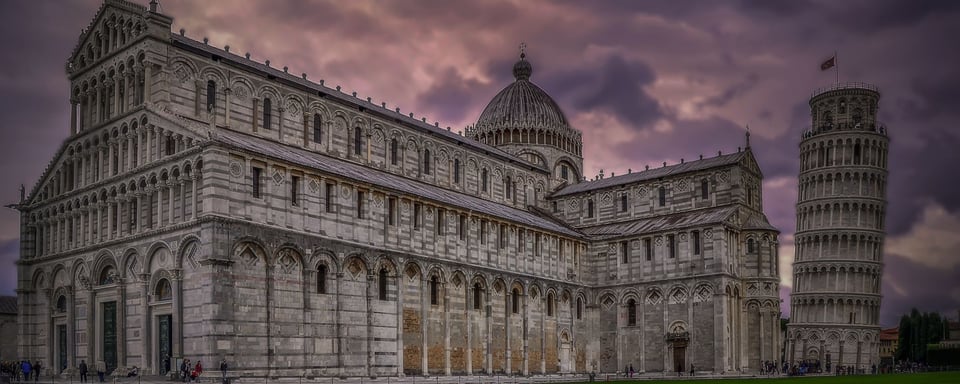
The Leaning Tower of Pisa is a bell tower in Pisa, Italy that is famous for its tilt. It is a UNESCO World Heritage Site, and is one of the most popular tourist destinations in Italy. The Leaning Tower of Pisa is a cultural treasure, and efforts are being made to stabilise it and prevent it from collapsing. Its distinct lean has made it a recognizable symbol worldwide.
-
Cultural Value
Architectural Wonder
The Leaning Tower of Pisa was constructed in the 12th century as the bell tower for Pisa's cathedral complex. Its architectural style is Romanesque, characterised by its round shape, arches, and decorative elements. The tower's lean, resulting from a foundation subsidence, has become its most famous and intriguing feature.
Cultural Symbol
The Leaning Tower of Pisa is a potent symbol of human achievement and the complex relationship between man and the forces of nature. It represents Pisa's historical legacy and artistic achievements, attracting visitors from around the world who come to marvel at its unique tilt and historical significance.
Touristic Attraction
The tower's lean has turned it into a popular tourist attraction, drawing millions of visitors each year. Its cultural value lies in its ability to captivate and intrigue visitors with its architectural anomaly and the story of its construction and preservation.
-
Preservation Efforts
Restoration and Stabilization
The preservation of the Leaning Tower of Pisa has involved ongoing restoration and stabilisation efforts to mitigate the lean and ensure its structural integrity. In the late 20th century, extensive restoration work was undertaken to stabilise the tower and reduce its inclination.
Visitor Management
To balance tourism and preservation, visitor access to the tower is carefully managed. A limited number of visitors are allowed inside at a time, and specific visitor routes and time slots are designated to minimise the impact of visitor traffic.
Monitoring and Maintenance
The tower is continuously monitored to assess any changes in its lean or structural stability. Regular maintenance activities, such as cleaning, repair of damaged areas, and structural reinforcement, are carried out to ensure its longevity.
UNESCO Protection
The Leaning Tower of Pisa, along with the Piazza del Duomo (Cathedral Square) of Pisa, has been designated as a UNESCO World Heritage Site since 1987. This recognition highlights its outstanding universal value and emphasises the need for international collaboration in its preservation and management.
-
The Great Barrier Reef
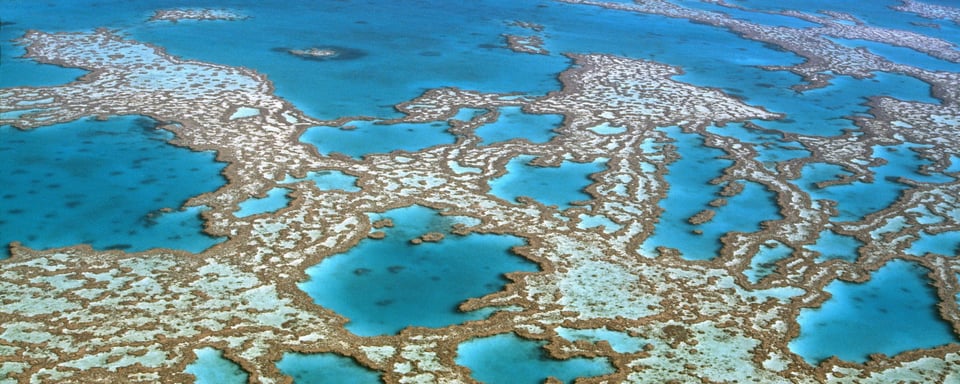
The Great Barrier Reef is the world's largest coral reef system composed of over 2,900 individual reefs and 900 islands stretching for over 2,300 kilometres over an area of approximately 344,400 square kilometres. The reef is located in the Coral Sea, off the coast of Queensland, Australia. The Great Barrier Reef is a natural treasure, and efforts are being made to protect it from the effects of climate change.
-
Natural Value
Biodiversity Hotspot
The Great Barrier Reef is the world's largest coral reef system, spanning over 2,300 kilometres (1,400 miles) and comprising thousands of individual reefs and hundreds of islands. It is home to an extraordinary diversity of marine species, including coral, fish, turtles, dolphins, sharks, and countless others. The reef's vibrant and intricate ecosystem is a hotspot of biodiversity.
Coral Reef Formation
The reef's stunning coral formations, with their vibrant colours and intricate structures, provide habitat and shelter for numerous marine species. Coral reefs are vital to maintaining the health of the oceans, supporting fish populations, and protecting coastlines from erosion.
-
Cultural Value
Indigenous Heritage
The Great Barrier Reef holds deep cultural significance for the Aboriginal and Torres Strait Islander peoples of Australia. These communities have maintained a strong connection with the reef for thousands of years, with cultural practices, stories, and traditional ecological knowledge deeply intertwined with its ecosystems.
Tourism and Economy
The Great Barrier Reef is a significant driver of tourism and contributes to the regional and national economy of Australia. It attracts millions of visitors each year who come to witness its breathtaking beauty and engage in various activities, such as snorkelling, diving, and boat tours. The tourism industry provides employment opportunities and supports local communities.
-
Preservation Efforts
Marine Park Protection
The Great Barrier Reef Marine Park was established in 1975, covering a vast area to protect the reef's ecosystems, biodiversity, and cultural heritage. It is managed through a collaborative effort between the Australian government, Indigenous communities, researchers, and conservation organisations.
Sustainable Fishing and Diving Practices
Strict regulations are in place to ensure sustainable fishing practices within the Marine Park. Limits on catch sizes, fishing methods, and protected zones help maintain the ecological balance and protect vulnerable species.
Climate Change Mitigation
Climate change poses a significant threat to the Great Barrier Reef due to rising sea temperatures and ocean acidification. Preservation efforts include raising awareness about climate change, advocating for greenhouse gas reduction, and promoting sustainable practices to minimise human impact on the reef.
Research and Monitoring
Extensive scientific research and monitoring programs are conducted to assess the health of the Great Barrier Reef, including monitoring water quality, coral bleaching events, and species populations. This information helps inform conservation strategies and management decisions.
UNESCO Protection
The Great Barrier Reef was inscribed as a UNESCO World Heritage Site in 1981, recognizing its outstanding universal value. This designation reinforces the need for international cooperation in its preservation and management.
-
Yellowstone National Park
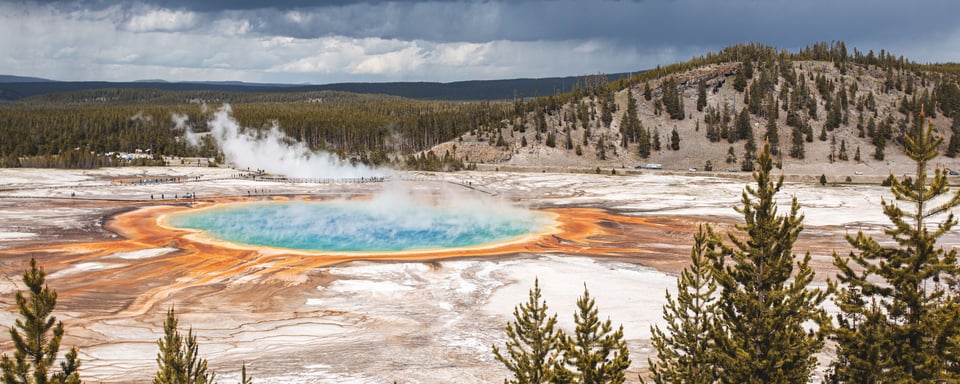
Yellowstone National Park is a national park in the United States that is home to a variety of geothermal features, including geysers, hot springs, and mudpots. It is one of the most iconic and oldest national parks in the world.Yellowstone National Park is a natural treasure, and efforts are being made to protect it from the effects of climate change.
-
Natural Value
Unique Geothermal Features
Yellowstone is renowned for its geothermal wonders, including geysers, hot springs, mud pots, and colourful thermal pools. The park is home to the famous Old Faithful geyser, which erupts regularly, and the Grand Prismatic Spring, one of the world's largest hot springs. These features are the result of volcanic activity and provide a glimpse into Earth's geologic processes.
Diverse Ecosystems
Yellowstone encompasses a variety of ecosystems, including forests, grasslands, alpine meadows, and riparian areas. It is home to numerous plant and animal species, including iconic megafauna such as grizzly bears, grey wolves, bison, and elk. The park's biodiversity contributes to its natural significance.
-
Cultural Value
Indigenous Heritage
Yellowstone has historical and cultural importance to Native American tribes, including the Shoshone, Bannock, Crow, and Blackfeet. These tribes have ancestral connections to the region and continue to have cultural ties to the park's natural resources and landscapes.
Conservation Legacy
Yellowstone National Park played a pivotal role in the establishment of the national park system worldwide. It became the first national park in the United States in 1872, inspiring the conservation movement globally. Its designation as a national park helped pave the way for the protection and preservation of natural areas worldwide.
-
Preservation Efforts
Park Management
The National Park Service, in collaboration with other agencies and stakeholders, manages Yellowstone National Park to protect its natural and cultural resources. The park's management plans focus on preserving the park's unique geothermal features, ecosystems, and wildlife habitats while providing for visitor enjoyment and education.
Visitor Education and Awareness
Yellowstone promotes visitor education to foster a deeper understanding and appreciation of the park's natural and cultural values. Interpretive programs, visitor centres, and educational materials aim to raise awareness about the park's importance and the need to protect its resources.
Conservation and Research
Yellowstone National Park supports various scientific research initiatives to study and monitor the park's ecosystems, wildlife populations, geothermal features, and natural processes. This research helps inform conservation efforts and management strategies.
Wildlife Conservation
Yellowstone participates in efforts to protect and restore wildlife populations, particularly those that have faced historical declines. Conservation programs focus on managing habitats, monitoring species populations, and mitigating human-wildlife conflicts.
These sites showcase the remarkable achievements of human civilizations throughout history and the awe-inspiring beauty of our natural world. Whether it's exploring the Great Wall of China, marvelling at the beauty of Machu Picchu, or diving into the vibrant underwater world of the Great Barrier Reef, these World Heritage Sites provide experiences that inspire, educate, and leave a lasting impact on all who visit them.
